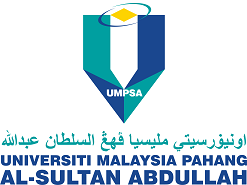Field Study of PID Parameter Tuning Investigation in Peristaltic Dosing Pump Control for Use in Automated Fertilizer Mixing System
DOI:
https://doi.org/10.15282/mekatronika.v2i2.6742Keywords:
Precision Farming, EC sensor, Fertilizer, PID ControllerAbstract
Proportional–integral–derivative (PID) controller is one of the linear control methods of closed-loop irrigation control. Today, it is mostly used in the industry to regulate industrial process variables such as pressure, flow rate, temperature, heat, and others. In precision farming, the use of technologies such as sensors and PID controllers is popular nowadays. The technologies help the farmer fasten the fertilizer's mixing process before using it directly to the crop. However, not all farms afford to use high technology, and using low-cost mixing systems is one way to reduce their cost. Therefore, this research investigates the accuracy of fertilizer mixture using low-cost methods, compares the results, and proposes improvements to ensure a better fertilizer distribution for precision farming. Different parameter tuning will affect the mixing process of the fertilizer. A series of experiments will be conducted based on the PID control parameter, the concentration of the salt solution, and the initial amount of nutrients in the mixing tank. The salt solution will be used as an alternative for the fertilizer because it contains some similar composition ingredients that the EC sensor can detect. The experiment starts with a preliminary test to determine the temperature effect on reading where room temperature will be the best for the next experiment. The best PID parameter that is used is K_P= 130 and K_I= 60 to prevent the phenomenon of overshoot occur during the mixing process. Using the same PID parameter for the next experiment had also found out that the higher the concentration of the salt solution, the higher the chance occur the phenomenon of overshoot. The initial amount of nutrients inside the mixing tank does not affect much for the mixing process because the best parameter for the experiment we had found from the previous experiment is used. The results extracted from the experiment that shows the mixing process from a low-cost automated fertilizer mixing system.
Downloads
Published
Issue
Section
License
Copyright (c) 2020 Wai Xhuen Yong, Ahmad Najmuddin Ibrahim

This work is licensed under a Creative Commons Attribution-NonCommercial 4.0 International License.




